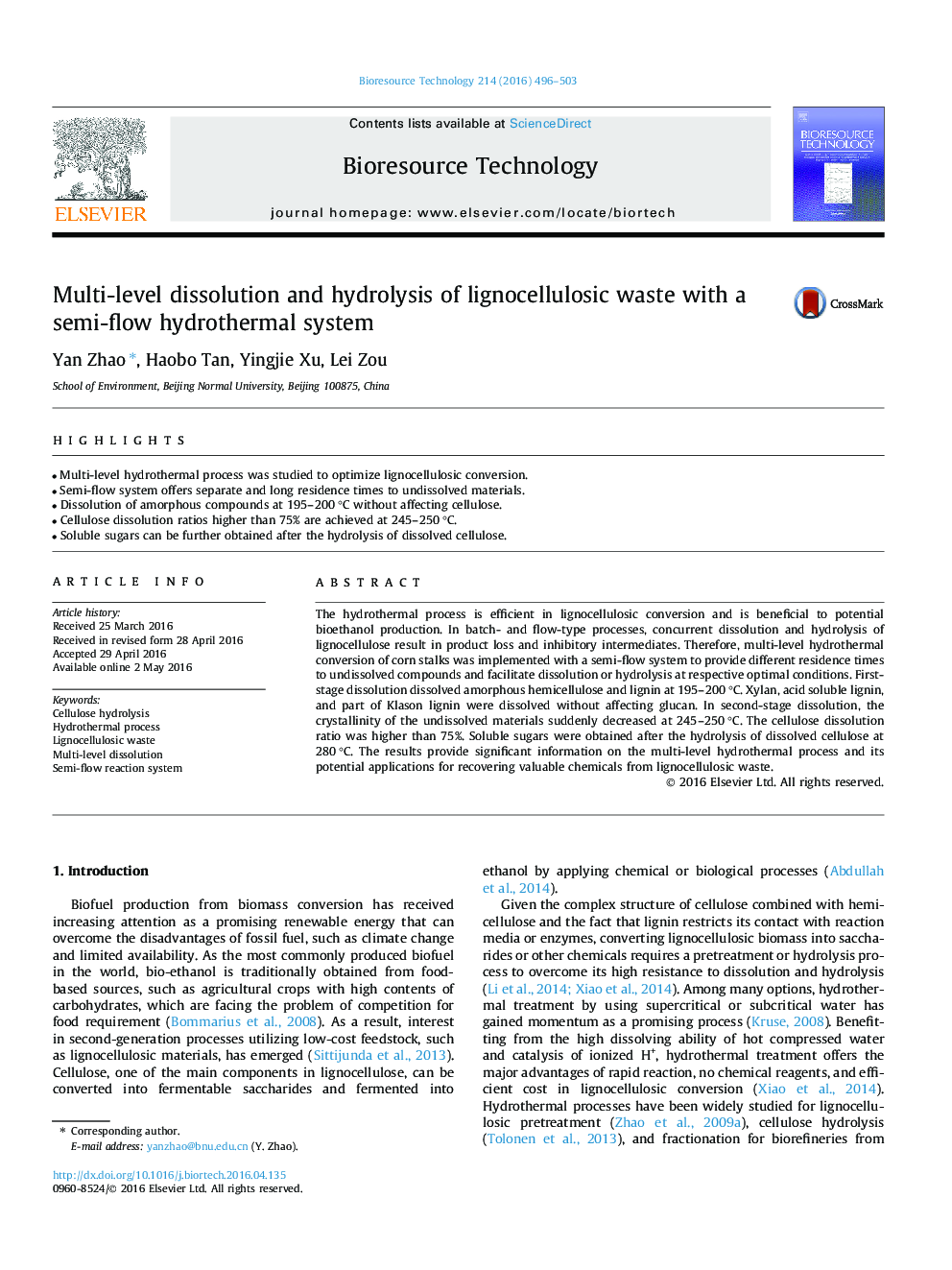| کد مقاله | کد نشریه | سال انتشار | مقاله انگلیسی | نسخه تمام متن |
|---|---|---|---|---|
| 679126 | 1459929 | 2016 | 8 صفحه PDF | دانلود رایگان |
• Multi-level hydrothermal process was studied to optimize lignocellulosic conversion.
• Semi-flow system offers separate and long residence times to undissolved materials.
• Dissolution of amorphous compounds at 195–200 °C without affecting cellulose.
• Cellulose dissolution ratios higher than 75% are achieved at 245–250 °C.
• Soluble sugars can be further obtained after the hydrolysis of dissolved cellulose.
The hydrothermal process is efficient in lignocellulosic conversion and is beneficial to potential bioethanol production. In batch- and flow-type processes, concurrent dissolution and hydrolysis of lignocellulose result in product loss and inhibitory intermediates. Therefore, multi-level hydrothermal conversion of corn stalks was implemented with a semi-flow system to provide different residence times to undissolved compounds and facilitate dissolution or hydrolysis at respective optimal conditions. First-stage dissolution dissolved amorphous hemicellulose and lignin at 195–200 °C. Xylan, acid soluble lignin, and part of Klason lignin were dissolved without affecting glucan. In second-stage dissolution, the crystallinity of the undissolved materials suddenly decreased at 245–250 °C. The cellulose dissolution ratio was higher than 75%. Soluble sugars were obtained after the hydrolysis of dissolved cellulose at 280 °C. The results provide significant information on the multi-level hydrothermal process and its potential applications for recovering valuable chemicals from lignocellulosic waste.
Journal: Bioresource Technology - Volume 214, August 2016, Pages 496–503
